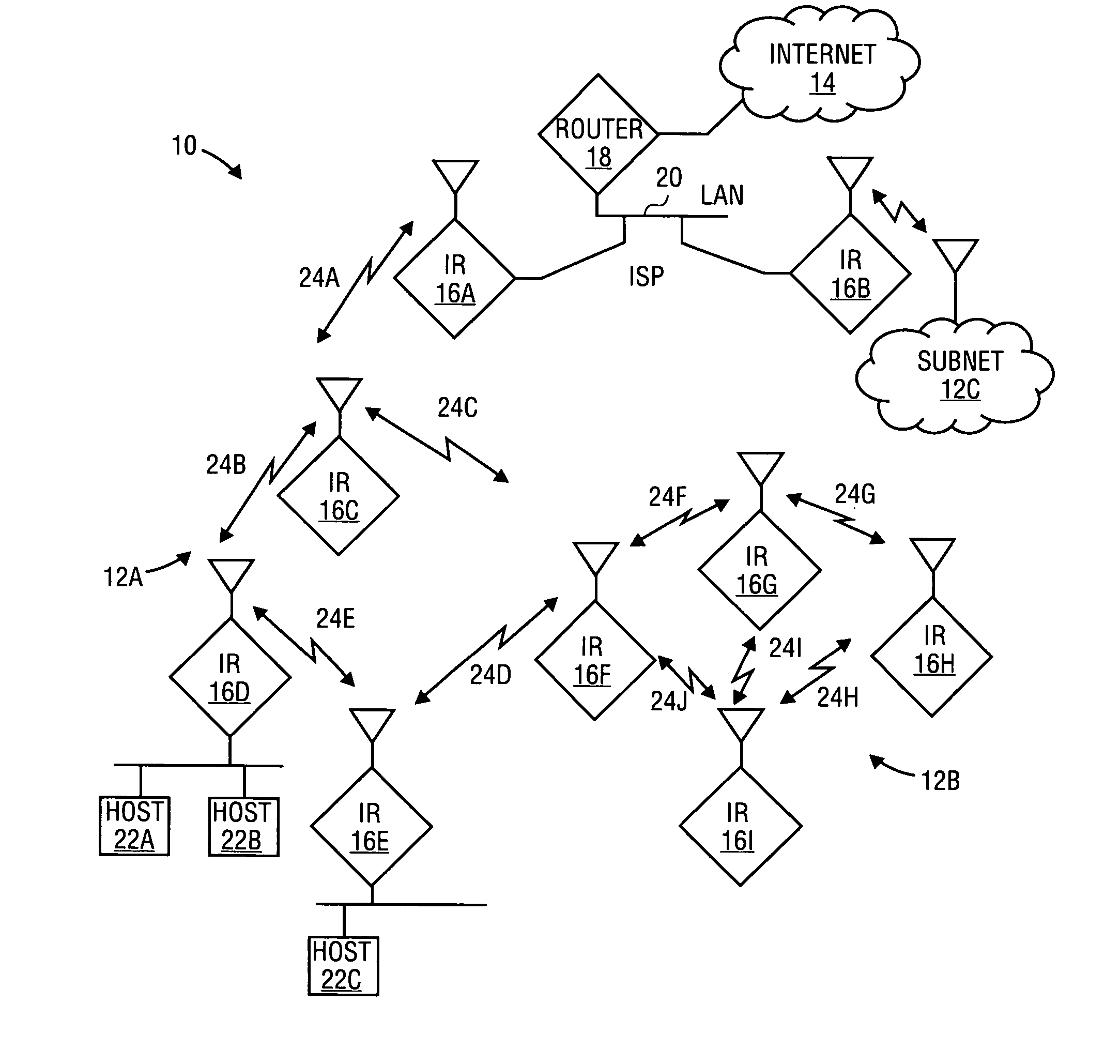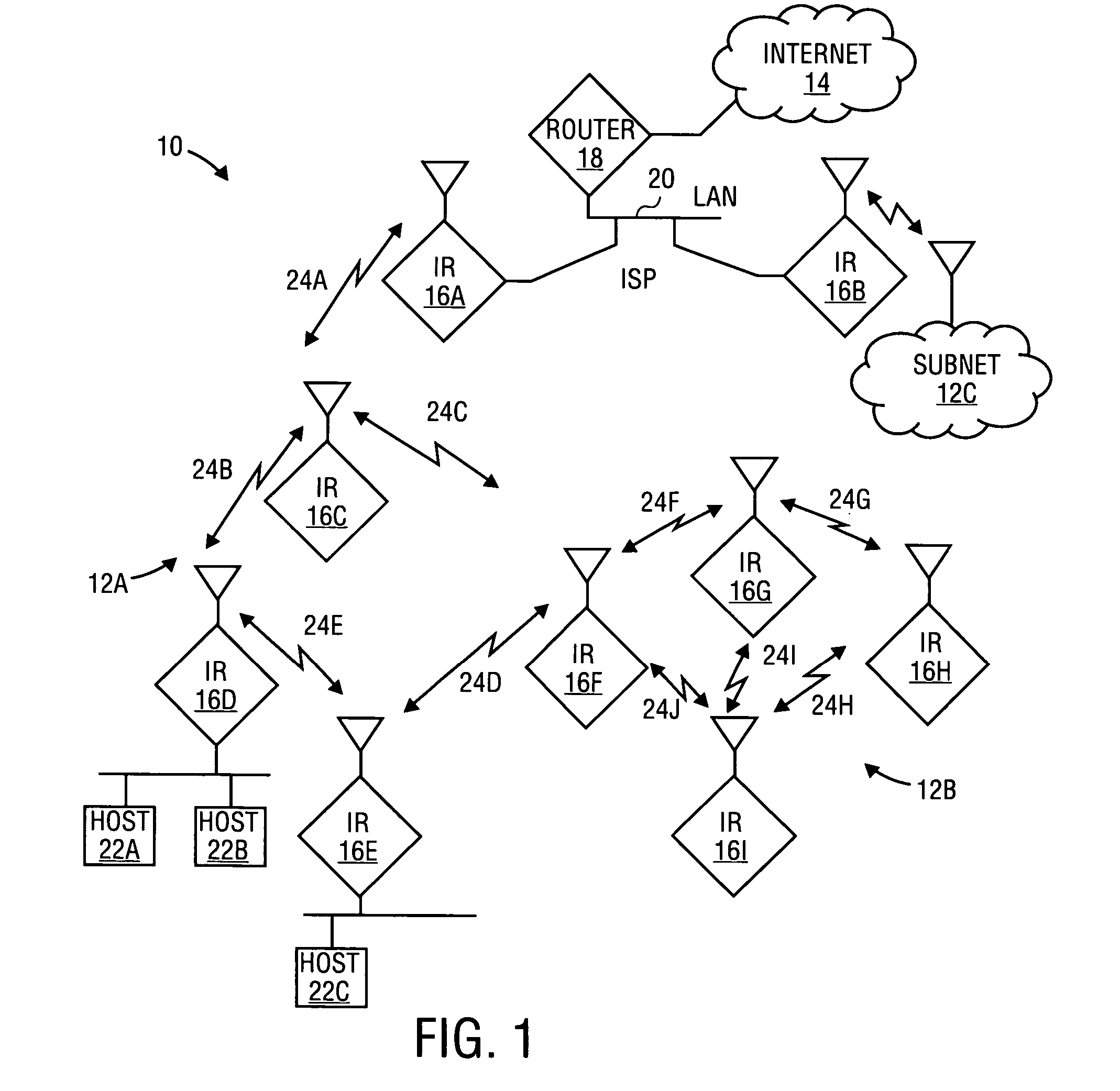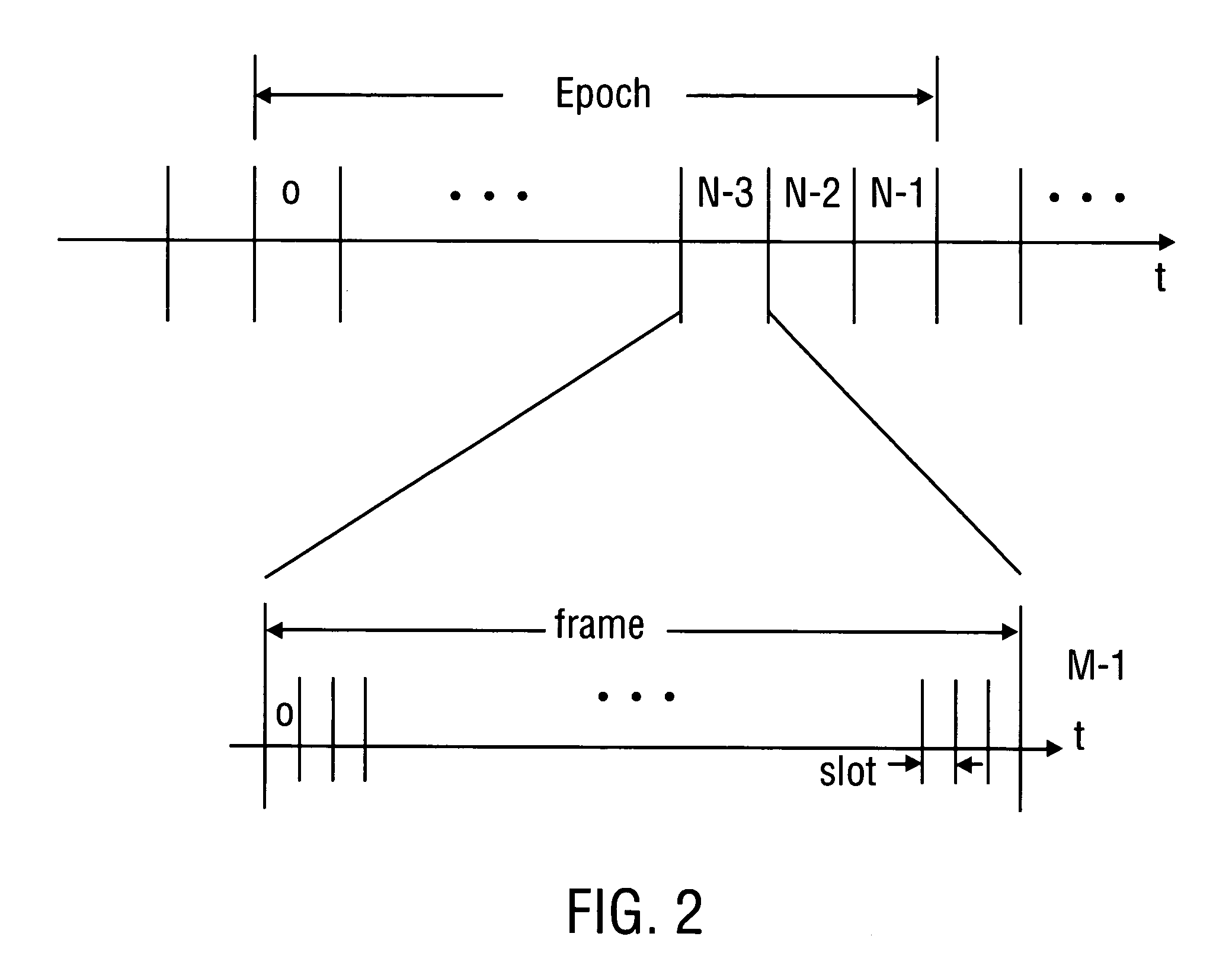Adaptive communication protocol for wireless networks
a communication protocol and wireless network technology, applied in the field of computer network communication protocols, can solve the problems of carrier sensing not being able to detect affecting the performance of csma, and difficulty in detecting busy-tone signals in narrow-band channels
- Summary
- Abstract
- Description
- Claims
- Application Information
AI Technical Summary
Benefits of technology
Problems solved by technology
Method used
Image
Examples
Embodiment Construction
[0040]Presented below is a communication protocol that provides link-level and media access control (MAC) level functions for wireless (e.g., ad-hoc) networks. In ad-hoc networks, hosts and networks (e.g., local area networks or LANs) may be attached to packet radios (which will be referred to as Internet Radios (IRs) or nodes), which provide inter-node communication within the ad-hoc network. In contrast to conventional, wired networks, mobility of hosts and routers, and varying link and / or node conditions are often the rule, rather than the exception, in ad-hoc networks. FIG. 1 illustrates aspects of an exemplary ad-hoc network that will assist in understanding the remaining discussion.
[0041]Ad-hoc network 10 may be considered as a number of sub-networks 12a, 12b, 12c, which provide an extension of the Internet 14 through a number of IRs 16a–16i. Each IR 16a–16i may be a packet radio with an assigned IP address. In general, the IRs 16a–16i operate over a single channel using sprea...
PUM
 Login to View More
Login to View More Abstract
Description
Claims
Application Information
 Login to View More
Login to View More - R&D
- Intellectual Property
- Life Sciences
- Materials
- Tech Scout
- Unparalleled Data Quality
- Higher Quality Content
- 60% Fewer Hallucinations
Browse by: Latest US Patents, China's latest patents, Technical Efficacy Thesaurus, Application Domain, Technology Topic, Popular Technical Reports.
© 2025 PatSnap. All rights reserved.Legal|Privacy policy|Modern Slavery Act Transparency Statement|Sitemap|About US| Contact US: help@patsnap.com



